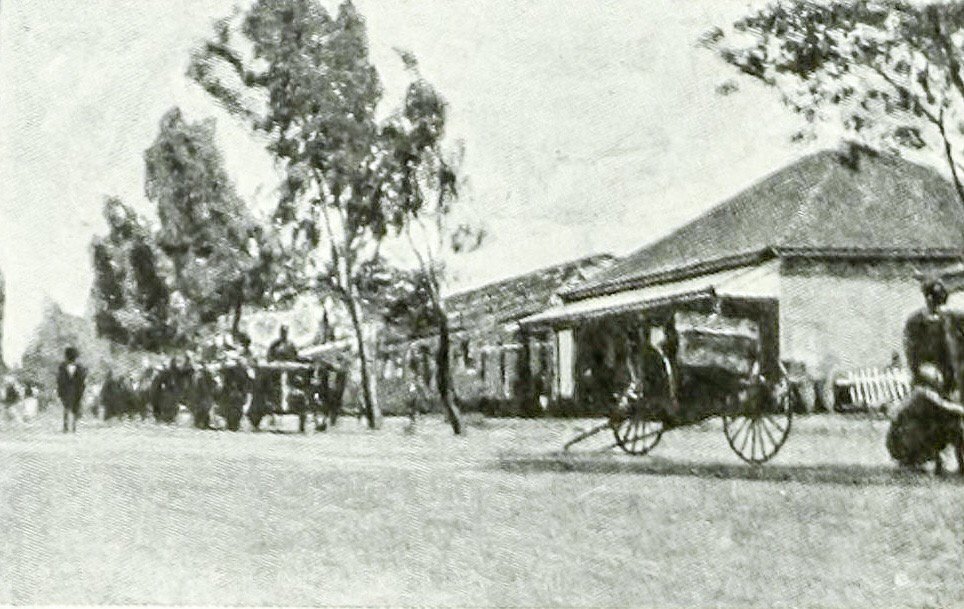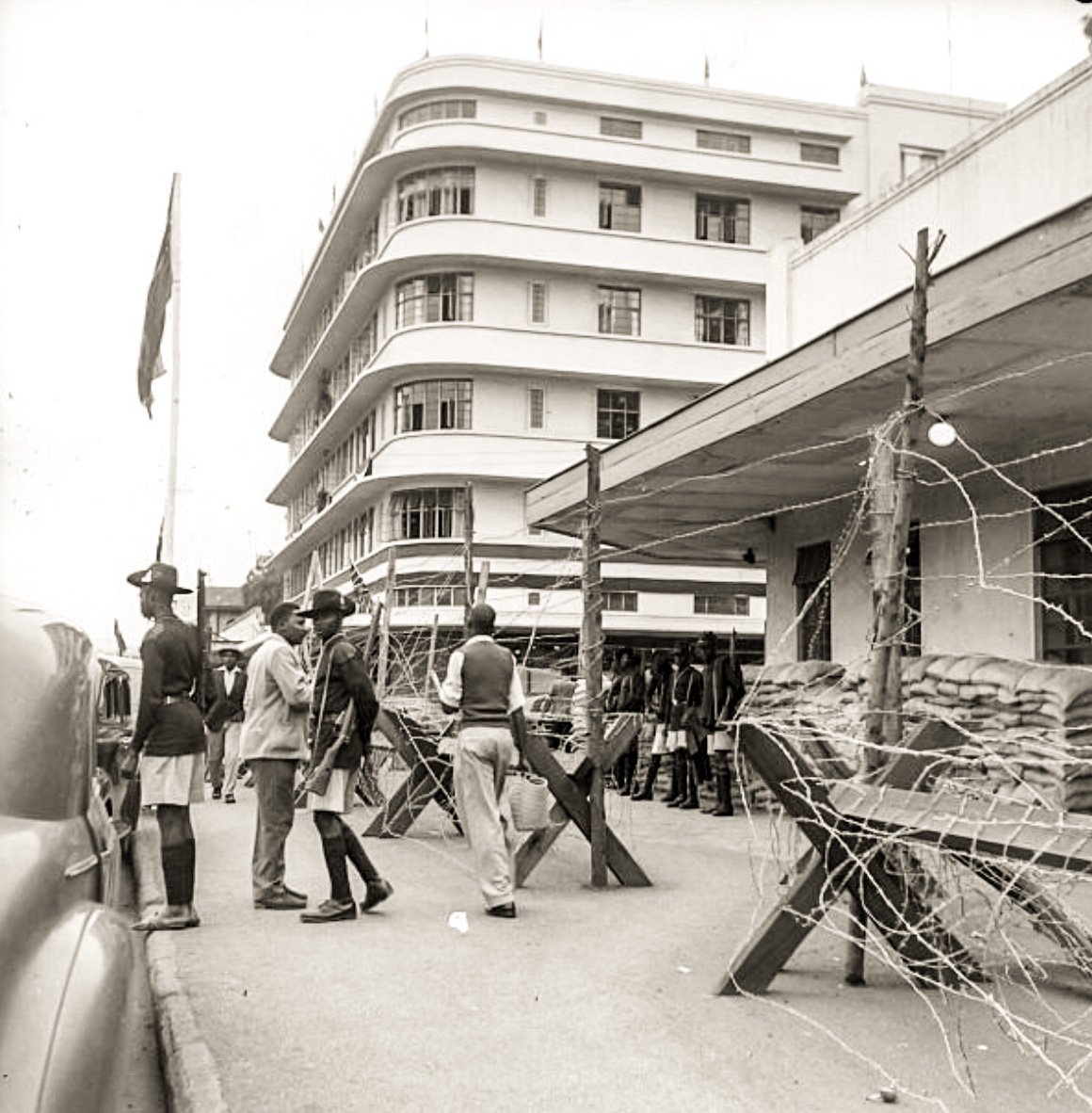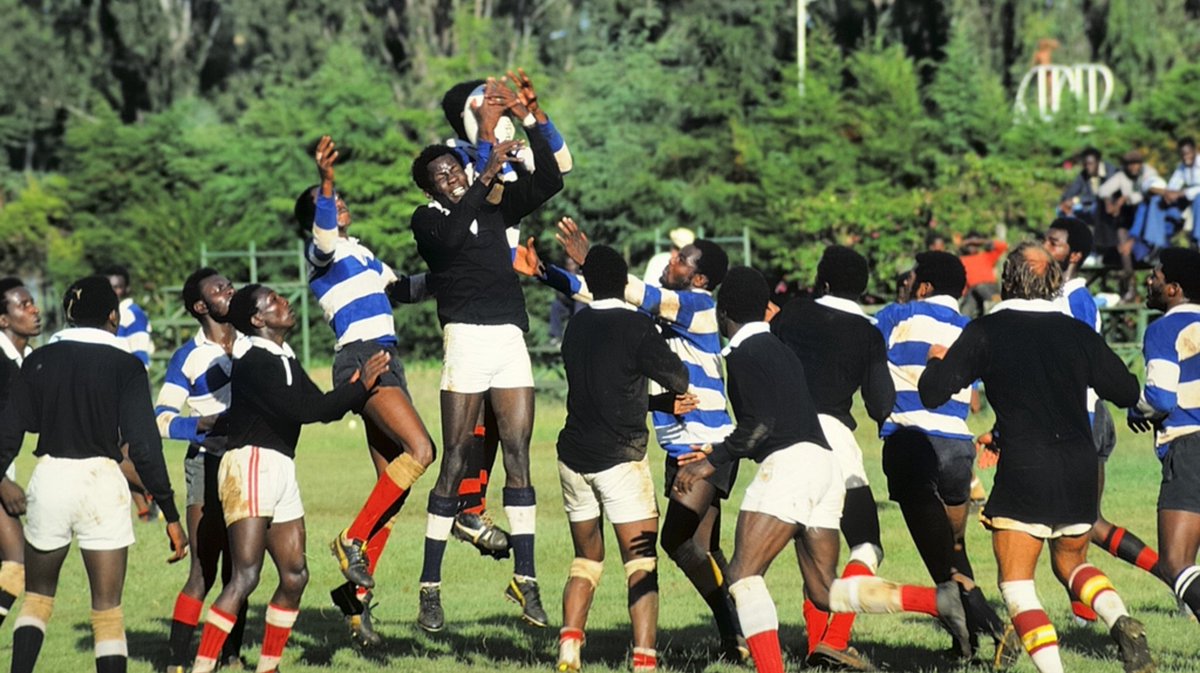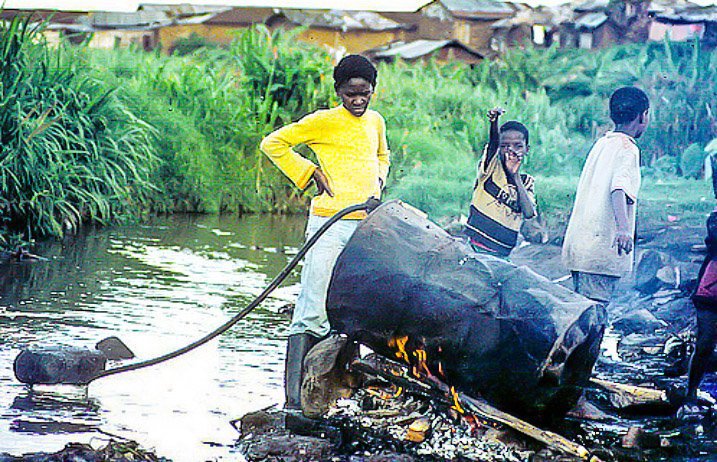2/48 1899: An early photo of Nairobi as a tent city. 

3/48 1909: A market scene in the fast growing town. 

4/48 1913: A wagon/rickshaw workshop and, next, wagon makers. 



5/48 1912: Government Road (Moi Avenue) Nairobi. 



6/48 1916: The front facade of Nairobi Club, which had been founded 15 years earlier, in 1901. 

7/48 1916: British officers and askaris of the KAR at Mbagathi Lines, which is Langata barracks today. 



8/48 1920s: A military band plays tunes outside Government House. This is State House today. 

9/48 1921: St. Austin’s Church with coffee bushes in the foreground. 

10/48 1927: Government Road (Moi Avenue). 

11/48 1936: Uganda Railway HQs and Sixth Avenue (later Delamere Avenue, then later renamed Kenyatta Avenue, Nairobi) 



12/48 1937: Msongari School from the air. 

13/48 1941: Guns of Italians killed or captured during #WW2 are displayed to the public. 

14/48 1942: City Market, whose construction began in 1925. 

15/48 1954: British officers execute Operation Anvil in the streets. This was an operation at the height of the Emergency to rid the city of #MauMau. 



16/48 1954: Mau Mau suspects under detention in Bahati and downtown Nairobi respectively. 



17/48 1954: Kenya plays Uganda during the Gossage Cup final at Doonholm Stadium, which is City Stadium today. 

18/48 1955: The entrance to Royal Nairobi National Park. 

19/48 1958: An East Africa Safari rally car zooms last City Hall after being flagged off. 

20/48 1961: Cars parked in downtown Nairobi. 

21/48 1961: A man walks past Standard Bank of South Africa Building on Delamere Avenue. The building hosts Standard Chartered Bank today. 

22/48 1961: Nairobi Primary School’s swimming pool. The school was founded as a junior school of Prince of Wales School (Nairobi School). 

23/48 1961: Skyline over the city of Nairobi. See the Union Jack fluttering atop Parliament Buildings? 

24/48 1965: Kenyans at the Jockey Club races. 

25/48 1965: A beggar in downtown Nairobi. Next is a view in the same year of the Moi Avenue-Kigali Road junction with Jamia Mosque in the background. 



26/48 1966: A small crowd at a bus stage in Westlands. 

27/48 1966: The grounds of the Great Circus of India in South B and, next, a circus performance in session. This was at grounds occupied by Nyayo Stadium today. 



28/48 1966: Grounds of the former Royal College. They are today the University of Nairobi grounds. 



29/48 1967: A scene at the Tom Mboya-Ronald Ngala Streets junction. 

30/48 1968: Government Road, which was later renamed Moi Avenue. 

31/48 1969: Kids from the nearby Catholic Parochial Primary School file nearly into the Holy Family Basilica. 

32/48 1970: Kenyatta International Conference Centre (KICC) under construction. 

33/48 1971: HFCK building along Kenyatta Avenue. This is Rehani House today. 

34/48 1973: A view of a bustling city with the Hilton Hotel in the background. 

35/48 1973: A section of Buru Buru Estate (Phase 1). The estate was built by HFCK with support from the Commonwealth Development Corporation. 

36/48 1975: A magnificent photo of the KICC grounds. 

37/48 1976: School kids wait to be conducted on a tour of the KICC. 

38/48 1978: Tom Mboya-Ronald Ngala Streets junction. 

39/48 1978: A rugby duel at the Railway Club in Nairobi. 

40/48 1981: Changaa brewing in Mathare slums. 

41/48 1983: Mcmillan Memorial Library, construction of which was sponsored by Juja Farm’s Lady McMillan. 

42/48 1985: Jua kali artisans at work in Shauri Moyo. 

43/48 1987: A young @BarackObama outside Ramogi studio in downtown Nairobi. 

44/48 1990: The front of Nairobi Railway Station. 

45/48 1993: Eastern end of City Hall Way, featuring Kencom Building in the background. 

46/48 1994: Worshippers at a rally hosted by German evangelist Reinhard Bonnke. 

47/48 2004: One of the London-look taxis that were popular in the city at the turn of this century. 

48/48 2014: A herder walks in the shadows of gigantic power windmills at Ngong Hills, just outside Nairobi #NaiNiWho 

Pardon the grammar - the inadvertent inclusion of ‘nearly’.
• • •
Missing some Tweet in this thread? You can try to
force a refresh














